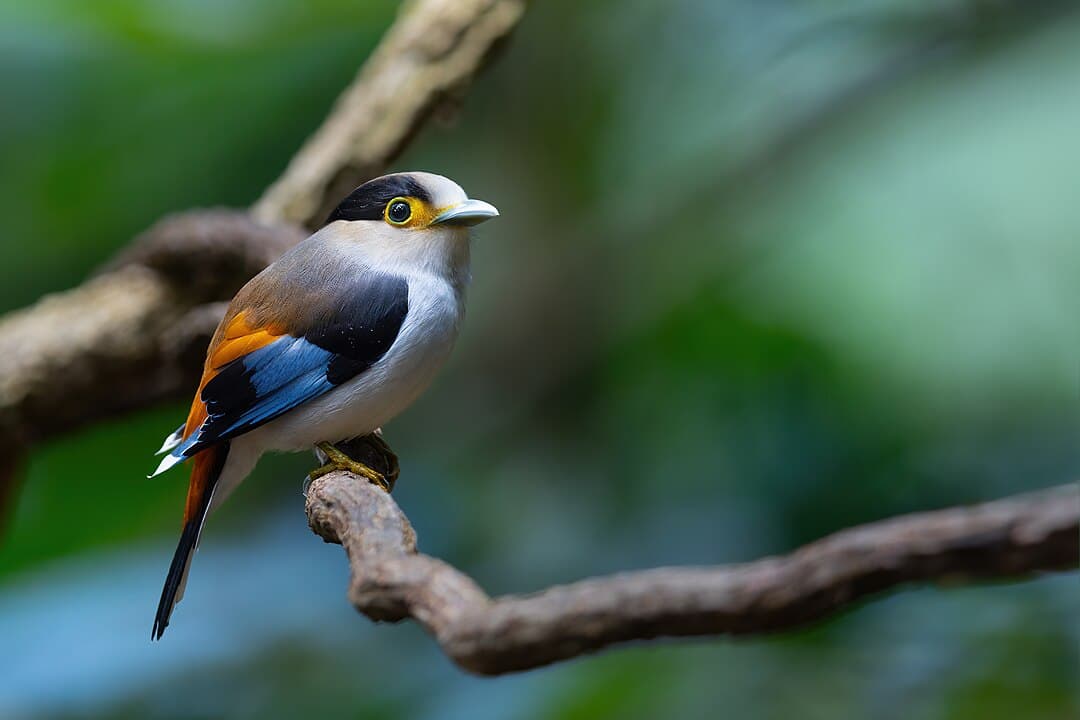Literally means “big-mouthed animal” in Khmer language, broadbill is actually true to its name. We have 5 broadbill species in Cambodia, and these colorful birds are absolutely gorgeous to look at. Each species is unique in its own way, and I guarantee not many people know about them at all. Let’s find out more about broadbill below and let me know which one is your most favorite.
Banded Broadbill (សត្វមាត់ធំពោះអង្កន់)
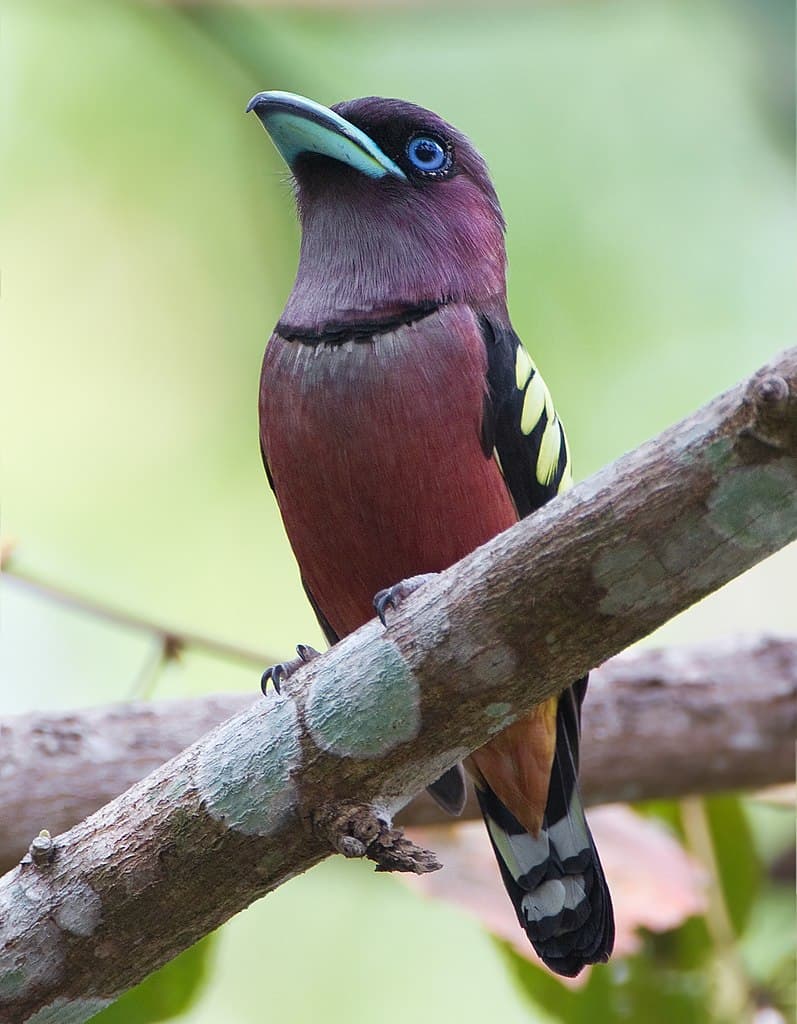
A banded broadbill is quite stout for a small bird at a size of just 23 centimeters. The overall coloration of the bird is mostly purplish-red with yellow-streaked black wings, a blackish face, and a bright blue beak. The beak is large and wide, and it plays an important role in catching insects mid-flight. A male banded broadbill has a black neckband while the female does not, and that’s how you tell the differences between them.
Banded broadbills are residents of Mainland Southeast Asia, inhabiting various forests such as forest edges and rubber plantations in lowland areas. They also live in freshwater swamp forests, heath forests, peat swamp forests, primary forests, and selectively logged forests. In their habitats, they mainly feed on arthropods such as beetles, crickets, grasshoppers, and katydids as well as snails and true bugs. Along with that, these birds also eat fruit and small vertebrates like spiders as well.
Black-and-Red Broadbill (សត្វមាត់ធំពោះក្រហម)
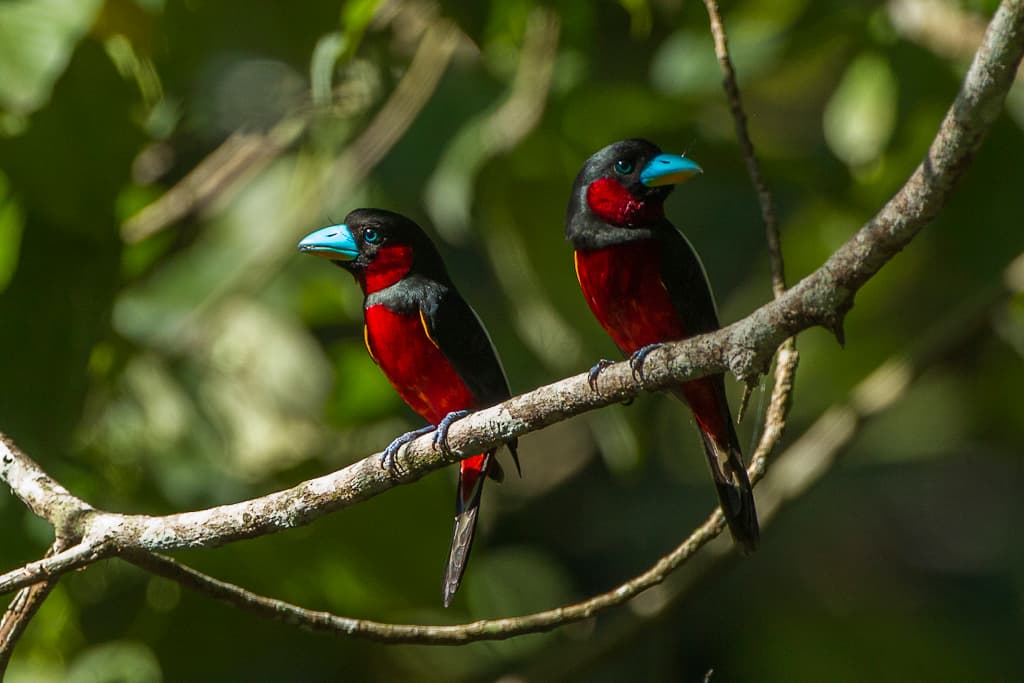
You can never mistake this broadbill species with any bird, their beautiful and bold colorations are absolutely gorgeous. A black-and-red broadbill has maroon underparts and black upperparts along with a maroon neck band and white bars on the wings. The large bill of this bird is turquoise-blue and yellow in color, and the tail is black and the feet are bright blue. An average bird is around 24 centimeters, and males are larger than females.
Black-and-red broadbills are native to Southeast Asia, living in Brunei, Cambodia, Indonesia, Laos, Malaysia, Myanmar, Singapore, Thailand, and Vietnam. Across their range, they live in lowland riparian forests as well as degraded habitats near rivers and secondary forest growth habitats. These birds are mainly insectivores but their diet also includes aquatic creatures such as crustaceans, fish, mollusks, and snails. Occasionally, they also eat leaves and seeds but not so often.
Dusky Broadbill (សត្វមាត់ធំខ្មៅ)
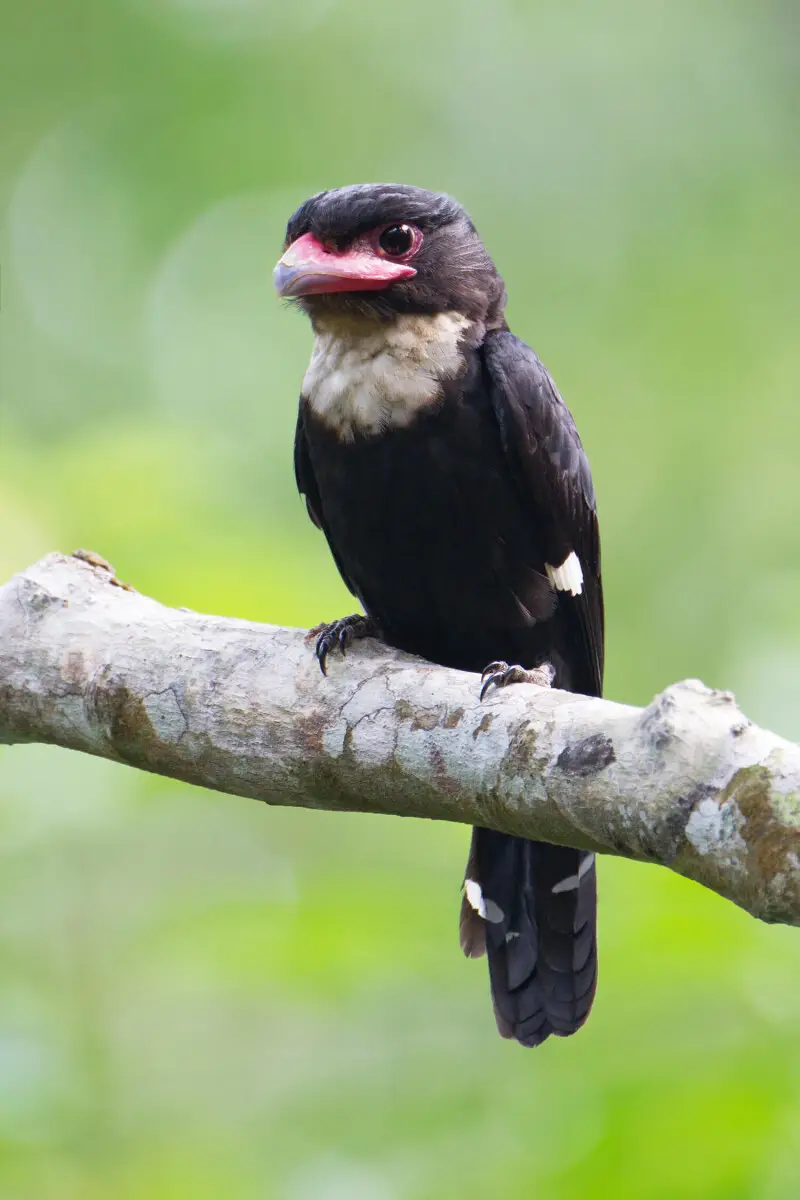
While the previous two are quite colorful, this broadbill species is rather the opposite. A dusky broadbill has charcoal gray plumage with a pale yellow throat, red bill, and a single white band on the wings. Dusky broadbills live in cloud forests, dry and moist tropical and subtropical broadleaf forests, montane forests, and tropical swamps. The Southeast Asian countries that they frequent are Brunei, Cambodia, Indonesia, Laos, Myanmar, Singapore, Thailand, and Vietnam.
One of the most interesting things about this broadbill species is the way they construct their nest. A dusky broadbill uses lichens, moss, and other plant matter to create a nest dangling from a thin branch. The materials used are to make sure that the nest looks like rotting vegetation so that the chicks are safe from predators. Some even use cobwebs to make the nest disguise even more believable, making them great and protective parents,
Long-Tailed Broadbill (សត្វមាត់ធំកន្ទុយវែង)
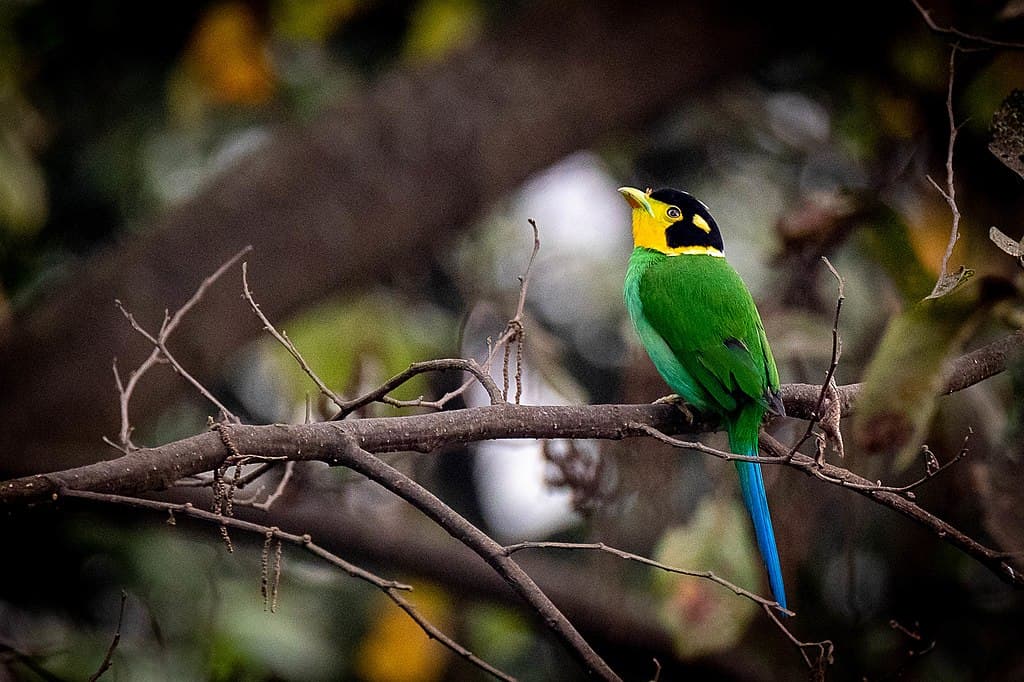
Long-tailed broadbill is around 25 centimeters in length, and its bright bluish-green plumage is absolutely gorgeous. The bird has a black cap, a bright yellow face and throat, and a white neckband. Along with that, its strong broad bill is yellowish-green in color while its long tail is blue. The combination of bright colors makes this bird look like it comes from a cartoon.
As for this broadbill species, it is native to the Himalayas with a range extending to Northeastern India and Southeast Asia. They are found in broad-leaved evergreen forests, creeks and streams, small bodies of water, and tropical and subtropical moist lowland forests. These forest birds feed on small insects, and they are very sociable so they travel in large noisy flocks. Some of their common meals are aphids, beetles, bugs, crickets, dipteran flies, grasshoppers, locusts, moths, small frogs, and spiders. Sometimes they may also feed on berries and other fruits as well though not so often.
Silver-Breasted Broadbill (សត្វមាត់ធំទ្រូងប្រាក់)
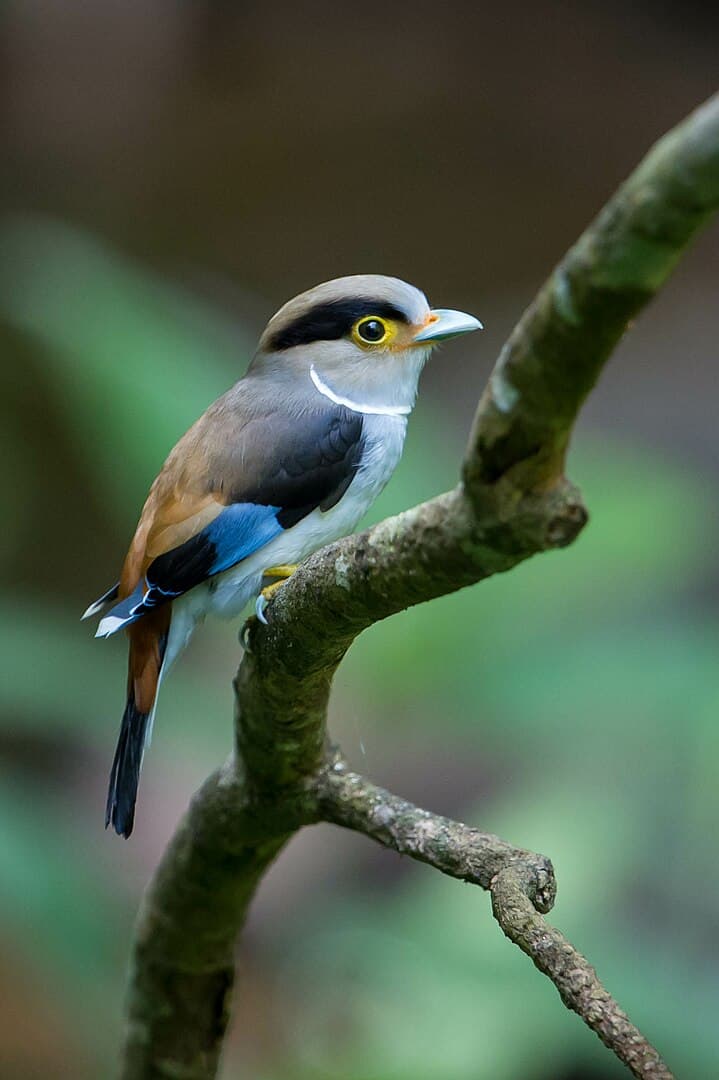
A silver-breasted broadbill is only around 17 centimeters in size, and it has a very gorgeous coloration. Its head has a rusty color while its forehead is ash-gray with a broad black strip over the eye. The breast and belly of the bird are white while the rump and upper wing coverts are bright rufous. You can tell a female apart from a male by a narrow silver band across her breast.
This broadbill species is a resident of Cambodia, China, Indonesia, Laos, Malaysia, Myanmar, Nepal, Thailand, and Vietnam. In those countries, they live in subtropical or tropical moist lowland forests and subtropical or tropical moist montane forests.
They are also common in bamboo forests, oak forests, pine forests, and semi-deciduous forests as well. Silver-breasted broadbills feed on insects and invertebrates, mostly caterpillars, grasshoppers, mantises, larvae, and small land snails as well as fruits occasionally. Despite having a healthy population, their number has been threatened by deforestation, fragmentation, and habit degradation.
Related Post: Nightjar Species In Cambodia
